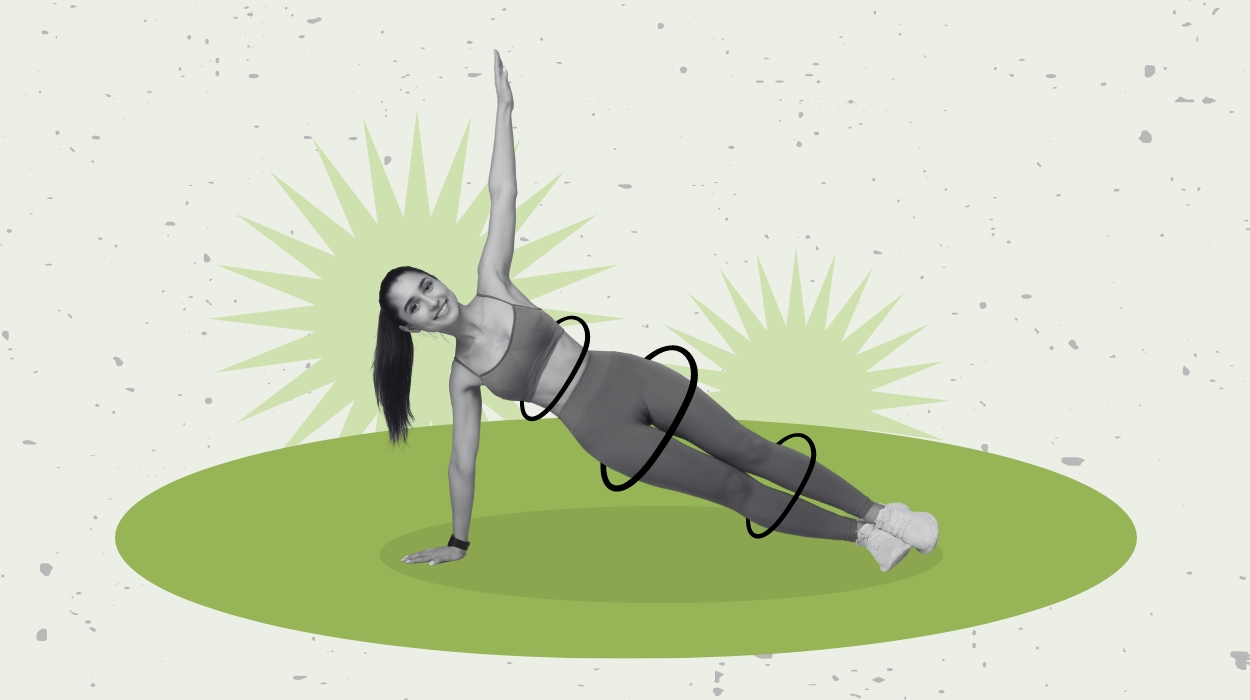
As you establish your fitness regimen, you may want to give special attention to your core muscles during your workouts.[1] Total body fitness is indeed important, yet sometimes we must give our bodies a targeted tune-up. This can mean constantly working on our upper body strength.
Think of where obliques are on the body, how they drive our upper body and pelvis movements, and how they influence how well our backs support these actions. We’ll look at several oblique exercises[2] because proper activation and utilization of these muscles are necessary for facilitating everyday actions.
When you pursue these exercises to optimize wellness, be certain to follow a healthy diet to enhance the effects of your workout, and you may even consider a fat burner to influence calorie burning during the oblique workouts.
Best Oblique Workouts To Build Stronger Core
Here are eight exercises that efficiently target your obliques:
Best Oblique Exercises To Try Now
Side Plank
If you’re lounging around the house or you have a little spare time in the office, you may want to try oblique exercises without equipment. For example, the Side Plank is an exercise that targets the internal obliques and enhances stability while improving posture and neuromuscular control.
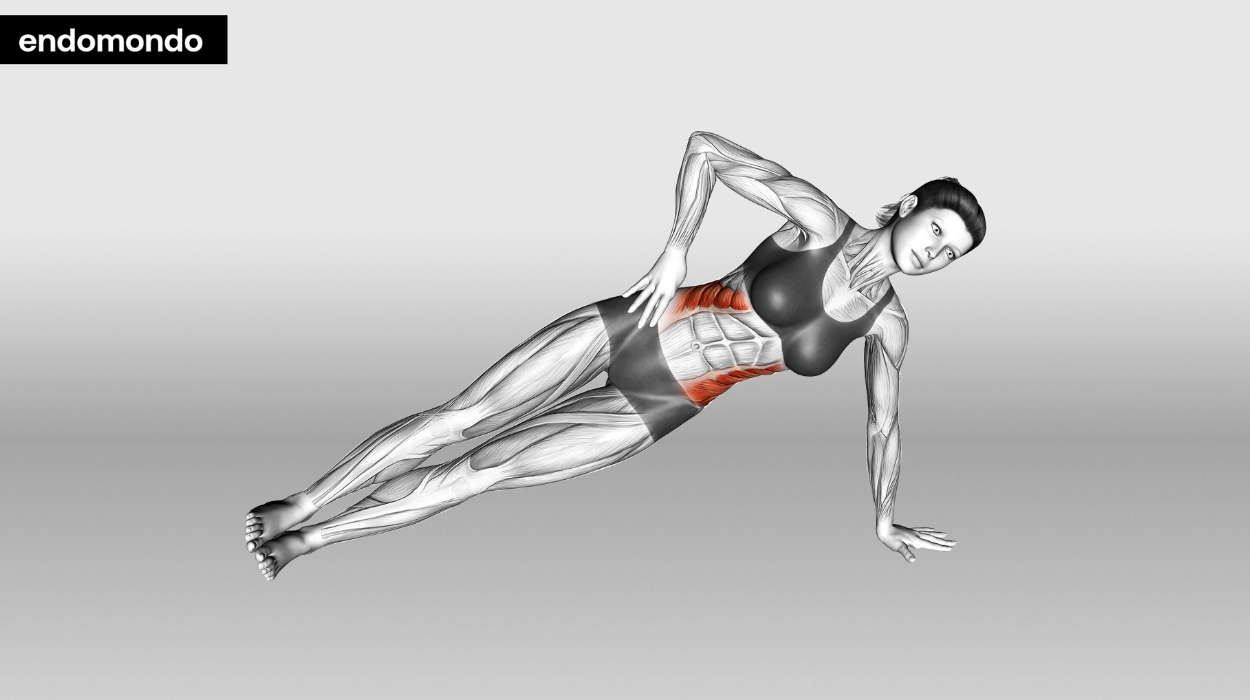
How to do:
- Get into the side plank position by lying down on your side with one leg placed atop the other in a straight line.
- Prop yourself up in a forearm plank position so that your shoulder is in line with your elbow. Place the other hand on your hip.
- Keep your body straight and push your exposed hip up towards the air.
- Hold this position for 30 seconds. Maintaining proper plank form for one to two minutes is ideal.
Tips:
- Maintain a straight line from head to heels to protect your lower back.
- Engage your core muscles for stability throughout the exercise.
- Position your elbow directly under your shoulder to avoid straining your shoulder joint.
Optimal Sets and Reps: 4 sets of 30 seconds per side.
Alternate Heel Touchers
This oblique workout targets the internal and external obliques and the entire rectus abdominis.
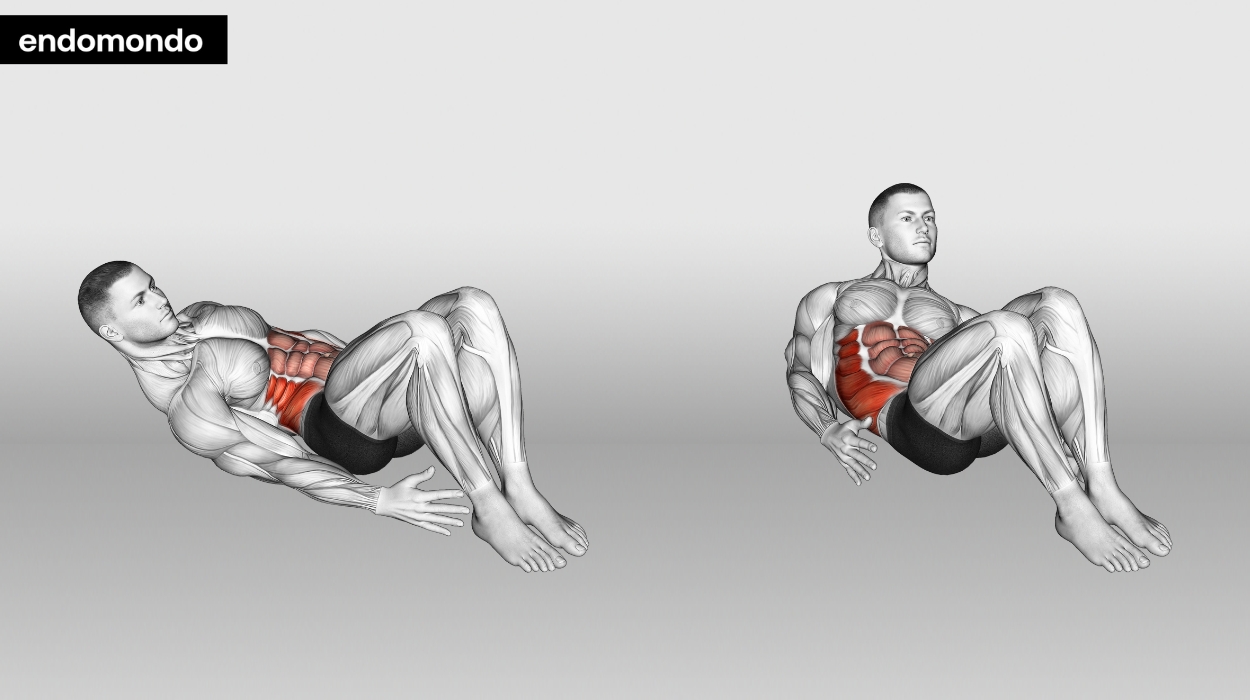
How to do:
- Lie on your back with your knees bent and feet flat on the floor.
- Arms at sides.
- Lift your upper body off the ground, reaching for your heels alternately.
Tips:
- Lie on your back with your knees bent and feet flat on the floor. Keep your lower back pressed against the ground to engage your core throughout the exercise.
- Lift your upper body slightly off the ground and alternate touching your right heel with your left hand and your left heel with your right hand. Engage your oblique muscles to twist and reach, focusing on the squeeze.
- Perform the exercise with controlled and deliberate movements, avoiding any jerky or rushed motions. This ensures that you engage your obliques effectively and reduce the risk of straining your back.
Optimal Sets and Reps: 3 sets of 15-20 reps per leg.
Crossover Mountain Climbers
This is exercise external oblique strengthening, for your core, and even your legs.
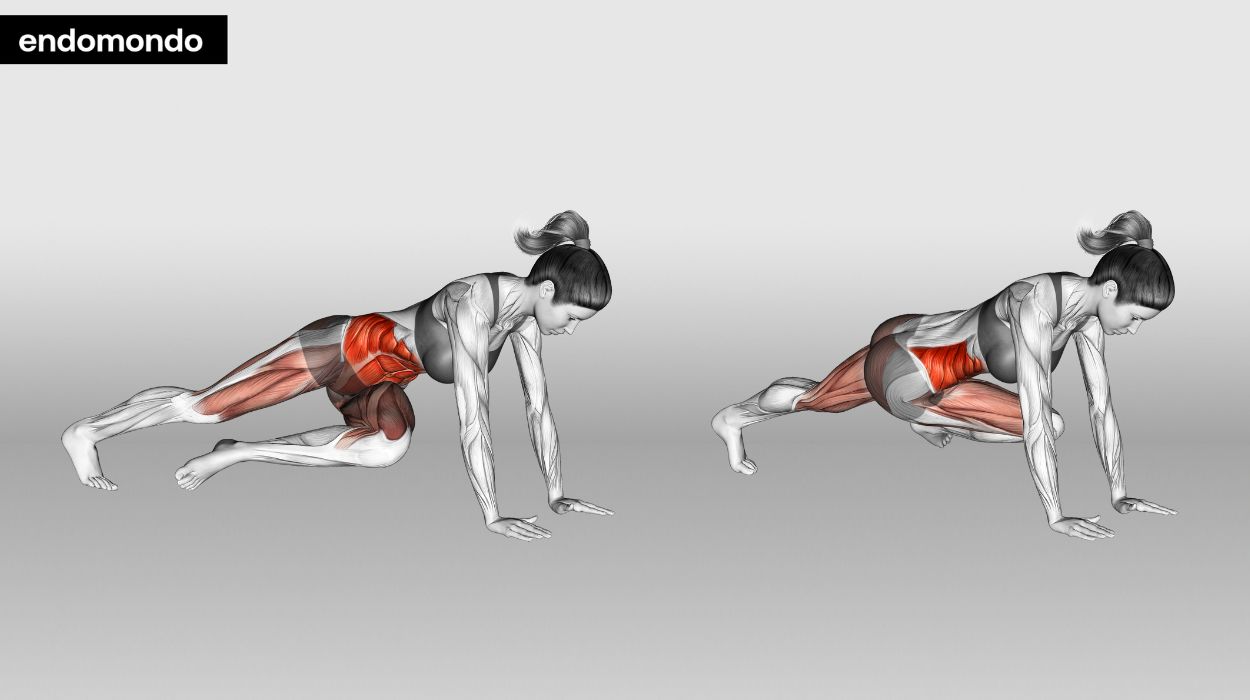
How to do:
- Get into a push-up starting position with your body in a straight line and your arms fully extended.
- Brace your core as you bring one knee in towards your chest.
- Cross over so you’ll tap your left knee toward your right elbow and the right knee toward the left elbow.
- Alternate rapidly for 30 to 60 seconds.
Tips:
- Start in a high plank position with your hands under your shoulders.
- Engage your core and bring your right knee toward your left elbow while keeping your back straight.
- Alternate sides in a controlled, fast-paced motion to elevate your heart rate.
Optimal Sets and Reps: 3 sets of 15-20 reps per side.
Thoracic Rotation
These rotations make the best oblique exercises science men and women can do nearly anywhere.
How to do:
- Get into a push-up position with a tight core and engaged glutes.
- Shift your weight onto your right hand as you raise your left, rotating your spine so your torso faces left and your left arm is raised upward.
- Hold this T-position and then return to your initial push-up form.
Tips:
- Ensure your movements are controlled and avoid any jerky motions to prevent strain or injury.
- Keep your core engaged throughout the exercise to support your spine and maintain stability.
- Start with gentle rotations and gradually increase the range of motion as your flexibility improves.
Optimal Sets and Reps: 3 sets of 10-12 rotations per side.
Farmer’s Carry
The Farmer’s Carry is one of the vital oblique exercises with a dumbbell because the unilateral workout can stabilize the core. Oblique exercises with weights can prime your core for the daily strain and load that are associated with occupational functions.
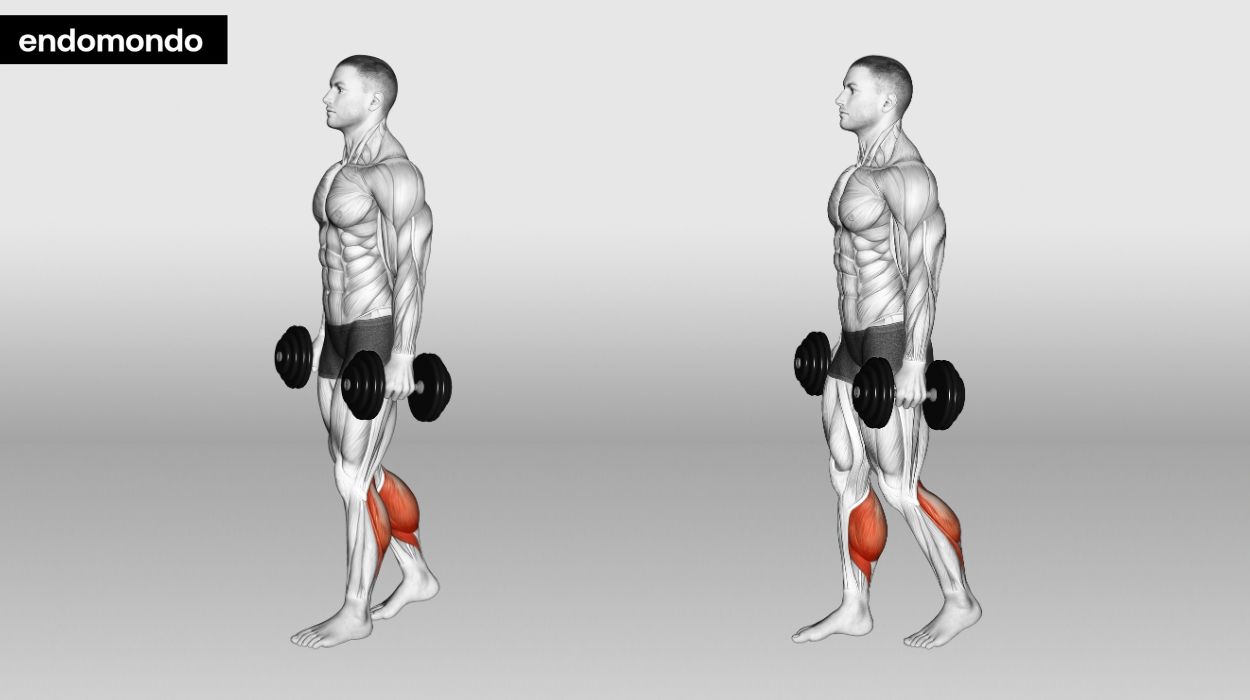
How to do:
- Stand erect with your arms at your side and the weight in one hand.
- Walk forward 15 steps doing so with your core tight and shoulders even. Turn around and walk back in this same fashion.
- Switch sides and repeat this sequence using the alternate arm. Do three laps for both sides.
Tips:
- Ensure an even weight distribution between both hands to maintain balance and avoid leaning to one side.
- Engage your core muscles to stabilize your spine and protect your lower back.
- Take short, controlled steps to minimize swaying or wobbling while walking with the weights.
Optimal Sets and Reps: 3 sets of 40-50 meters (or 30-60 seconds).
Russian Twist
The Russian Twist is an essential oblique exercise for beginners, as it builds up muscular endurance and increases muscle mass. This is a classic for tending to core mobility and is one of the oblique exercises with dumbbells.
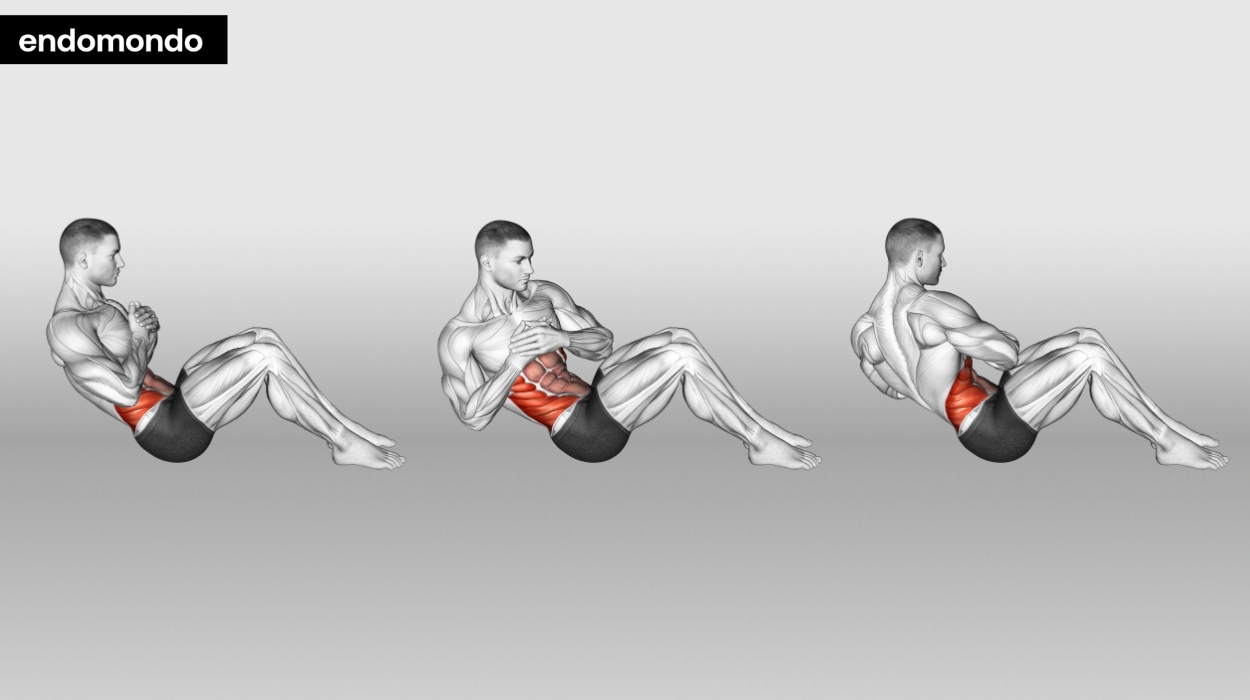
How to do:
- Sit down with your knees bent and feet flat.
- Tense your abdominals as you lean back into a V position, raising your feet from the floor. You can choose to keep your knees bent or stretch them out and lift your feet. Keep your back straight at all times.
- Turn your upper body to one side to bring the dumbbell down to the floor by your hip.
- Bring the dumbbell back to the center and then bring it down to your other side.
- Alternate between the two sides, and do 12 reps on each side.
Tips:
- Maintain a straight back and engage your core to protect your spine during the twist.
- Keep your feet elevated or grounded, depending on your fitness level, to control the exercise intensity.
- Twist your torso and touch the ground beside your hip with control, rather than jerking your movements.
Optimal Sets and Reps: 3 sets of 12-15 reps per side.
Single-Arm Lunge And Overhead Press
This is one of the ab oblique exercises that can be all-encompassing, as it strengthens the lower body too. One objective of this workout is coordination, which is highly necessary for neuromuscular control and various physical activities.
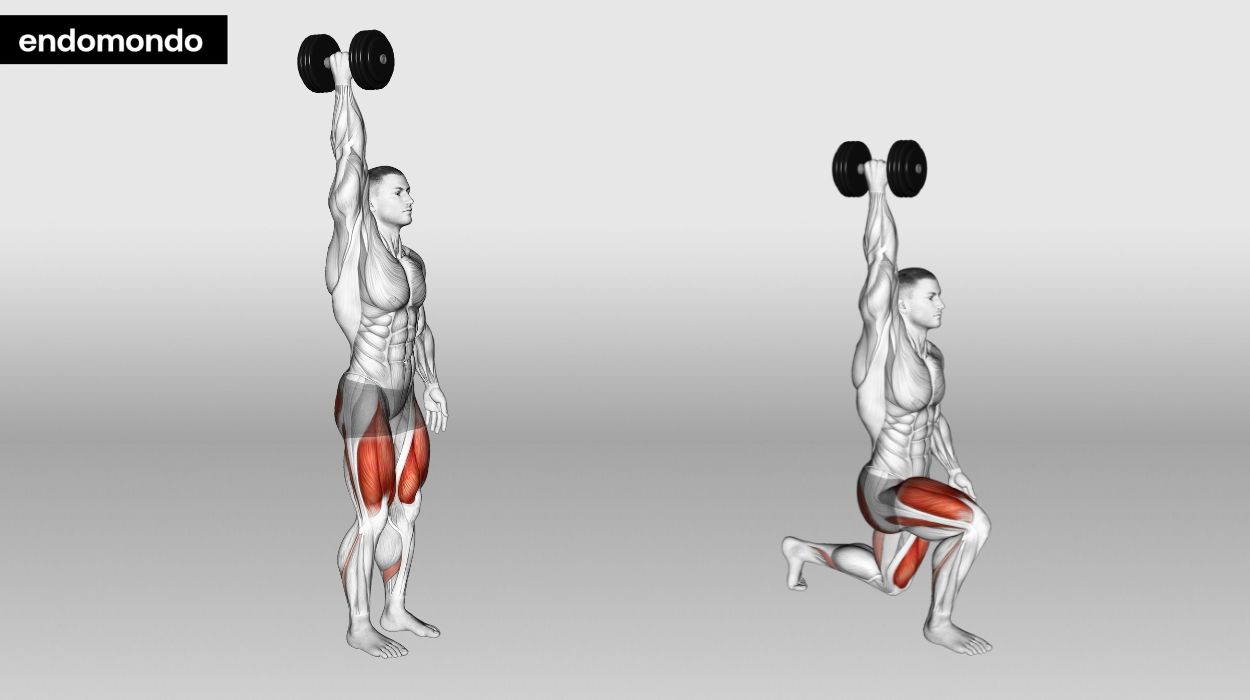
How to do:
- Begin in a standing position with your dumbbell at shoulder height.
- Step your left leg back into a reverse lunge with both knees bent 90 degrees.
- Stand up and return to your starting position. Press the dumbbell up toward the ceiling until your arm is fully extended.
- Bring it back down before repeating the whole movement on the other side.
Tips:
- Maintain a straight posture throughout the movement, avoiding excessive leaning forward or backward.
- Take controlled steps during the lunge and avoid rushing to maintain balance and stability.
- Choose a weight that challenges you but allows you to complete the set with proper form and control.
Optimal Sets and Reps: 3 sets of 10-12 repetitions on each arm.
Kettlebell Swing
If you want to mix your equipment up, oblique exercises kettlebell-style can be an exciting challenge. The swing works your core muscles and lower back, which makes a nice defense against injuries. A kettlebell swing may be just what you need to bolster your power and balance.
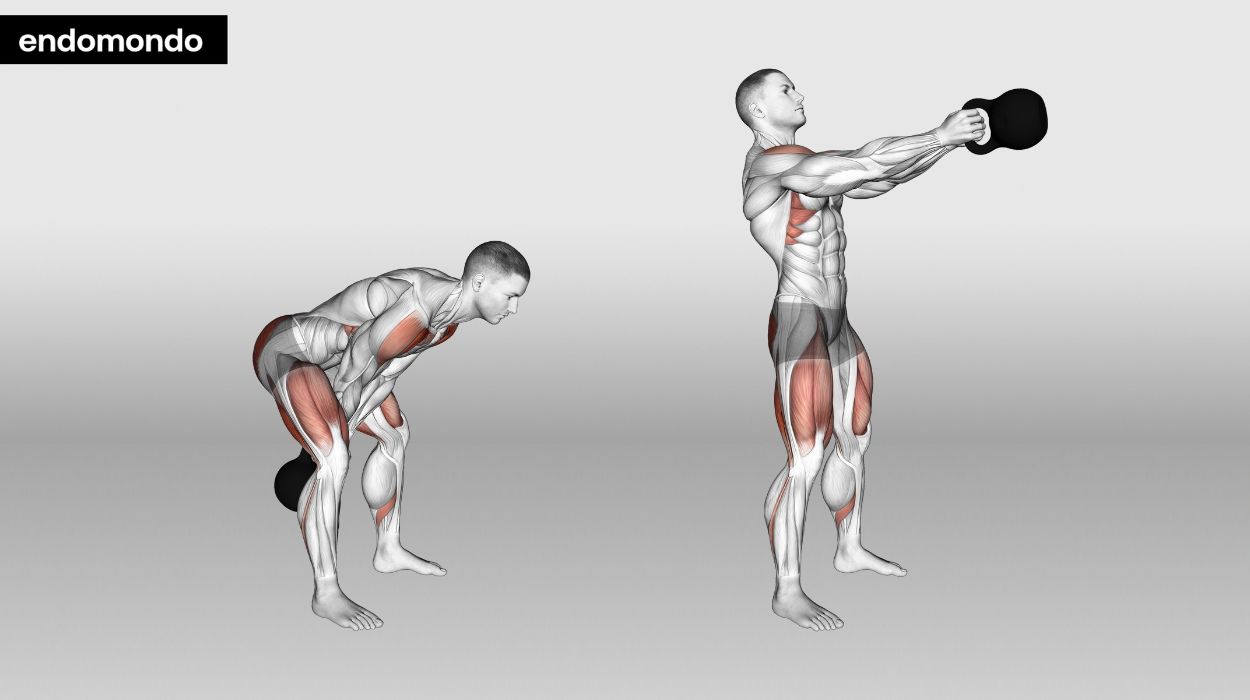
How to do:
- Place your kettlebell in front of you, standing with your feet shoulder-width apart.
- Lower yourself at the hips with a flat back, and lift the kettlebell with both hands.
- Swing the kettlebell in a pendulum motion between your legs with your knees bent slightly.
- To swing back and forth, push your hips forward to send the kettlebell in the air. As you do this, maintain a straightened neck and flat back.
- As the kettlebell swings upward, straighten your knees and ease into an upright position.
- Throughout this exercise, the kettlebell shouldn’t pass the shoulders. Keep a tight core to control the drop-off.
- The kettlebell will swing back down naturally, affording you a controlled drop-off that will help prepare for another rep.
Tips:
- Hinge at your hips, not your lower back, to initiate the swing and protect your spine.
- Maintain a neutral spine and engage your core throughout the movement.
- Use the power from your hips and glutes to propel the kettlebell, not your arms.
Optimal Sets and Reps: 3 sets of six to 10 reps
Benefits Of Training Obliques Exercises
Spinal Stability And Balance
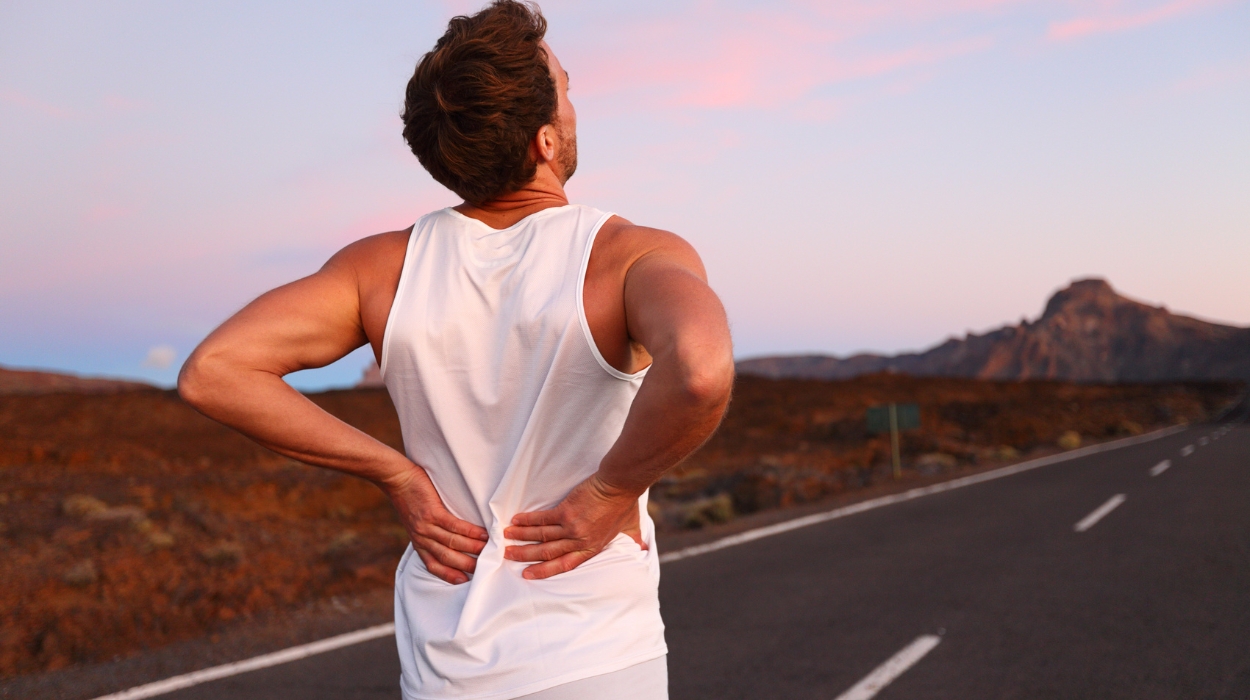
One benefit of an oblique exercise is the engagement of the core muscles that support the activities that we consider ordinary. When we relax our shoulders and sit up straight, we don’t think of the muscles involved in completing that action. Our core muscles, including the obliques, are responsible, and an oblique workout can be just the thing we need to support the musculoskeletal system.
The abdominal and spinal muscles[3] are connected and work together to support the body’s movements. The oblique muscles are classified as local abdominal muscles connecting the pelvis and ribcage to the spinal muscles. They support and stabilize posture, balancing our movements and even helping stabilize our breathing patterns as we shift positions throughout the day.
Core strength allows you to carry out your movements during the day efficiently without injury.
Injury And Pain Protection
Understanding the importance of the obliques and abdominal muscles to our musculoskeletal health helps us appreciate the role of obliques in injury prevention and alleviation. Doing some oblique muscle exercises can alleviate lower back pain[4] and other complications. When our core muscles are weak yet taken for granted, we find ourselves slouching at the desk and feeling discomfort in our lower back because these muscles haven’t been conditioned to support our posture or body.
A stabilized trunk allows for a great range of motion in the upper body and flexible movement of the lower extremities. These factors reduce the likelihood of musculoskeletal impairment and can also be used as an integral part of rehabilitation.
Doing the side oblique exercises that usually make up a unilateral workout can enhance your core strength. Many facets of strength training support motor skills and increase bone density, proving vital for preventing falls and fractures. Stronger muscles can alleviate daily stress on the bones and joints, protecting against injuries.
Weight Loss

Oblique exercises for both women and men can benefit weight loss and muscle building. Doing these exercises consistently for at least a few months can help overweight or obese participants because they keep the muscles from weakening. The workouts promote lean body mass and muscle strength while helping someone effectively lose weight.
Engaging in a belly exercise like planks can be a wonderful choice for developing your ab muscles. Also, be mindful that a rigorous workout, an energy-restricted diet, and healthy supplements that help you lose weight may also be effective.
Safety Tips For Oblique Muscle Exercises
Begin with adequate warm-ups like stretching and pay close attention to proper technique and form. Correct execution and thorough resting periods are essential to injury prevention. Stop doing the workouts if you experience unusual soreness and pain.
Summary
As you execute ab workouts at home or in the gym, work on supporting your fitness regimen with a healthy diet, as well as supplements and vitamin products that encourage fat-burning and muscle development. Implement healthful lifestyle habits like positive sleep habits and meditation. Remember that optimizing your fitness requires mindfulness and diligence.
Frequently Asked Questions
Core exercises, unilateral exercises, and anti-rotational workouts can work the obliques.
Oblique exercises can effectively tone the upper body and side abs.
Oblique muscles are the muscles on the side of the torso and are ab muscles.
Planks strengthen and build up the oblique muscles and your entire core.
Resources
- Oliva-Lozano, J.M. and Muyor, J.M. (2020). Core Muscle Activity during Physical Fitness Exercises: A Systematic Review. [online] 17(12), pp.4306–4306. doi:https://doi.org/10.3390/ijerph17124306.
- Athanasios Mandroukas, Yiannis Michailidis, Aggelos Kyranoudis, Kosmas Christoulas and Metaxas, T. (2022). Surface Electromyographic Activity of the Rectus Abdominis and External Oblique during Isometric and Dynamic Exercises. [online] 7(3), pp.67–67. doi:https://doi.org/10.3390/jfmk7030067.
- Lee, K. (2021). The Relationship of Trunk Muscle Activation and Core Stability: A Biomechanical Analysis of Pilates-Based Stabilization Exercise. [online] 18(23), pp.12804–12804. doi:https://doi.org/10.3390/ijerph182312804.
- Calatayud, J., Escriche-Escuder, A., Cruz-Montecinos, C., Andersen, L.L., Pérez-Alenda, S., Ramón Aiguadé and José Casaña (2019). Tolerability and Muscle Activity of Core Muscle Exercises in Chronic Low-back Pain. [online] 16(19), pp.3509–3509. doi:https://doi.org/10.3390/ijerph16193509.




